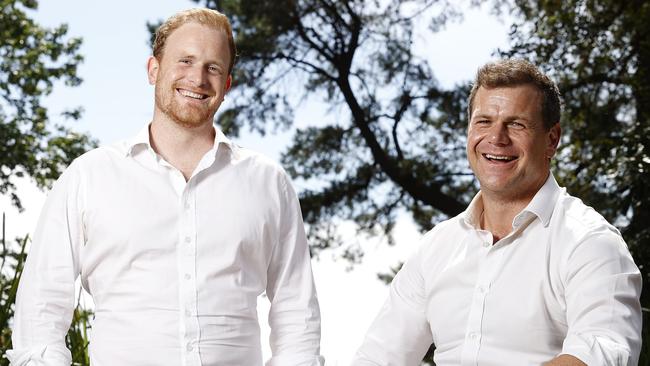After cracking $100,000 – how high can bitcoin go?
The cryptocurrency is exceeding previous dizzying heights and being likened to a store of value akin to gold. But how long can the bull run last?

Bitcoin has surged above $100,000 – a new record – exceeding the dizzying heights from the Covid-19 pandemic, prompting celebrations and warnings from some investors.
The cryptocurrency has recovered from a string of high-profile exchange collapses, including FTX’s bankruptcy, which sent it tumbling to as low as $24,369 in November 2022.
The bull run comes as the US Securities and Exchange Commission allowed mainstream investors to buy and sell bitcoin in January and ahead of next month’s “halving” – a digital phenomenon, which slashes the rate at which new bitcoins enter circulation, fuelling investor euphoria.
Dan Roberts – a former Macquarie banker who founded Nasdaq-listed bitcoin miner Iren with his brother Will – says the cryptocurrency has secured its place as a store of value akin to gold.

Mr Roberts said bitcoin exchange traded funds were snapping up about 10,000 coins a day when current new bitcoin supply was around 900 a day, which will fall to 450 after next month’s halving.
“Now of course, other existing holders will sell on the way up and that will liberate more supply, but equally this demand has popped up organically during a pretty flat negative market,” he said.
“It’s now getting recognition for its characteristics of scarcity and the store of value attributes. The best analogue we’ve got is gold – on parity it’s like $750,000 a coin.
“So you start to triangulate all that stuff … looking historically at these exponential post-halving price moves. You then overlay the macro and liquidity cycle over the course of the next 12 months. Yeah, I think you might see some pretty crazy results.”
But Mr Roberts said entry into bitcoin was also priced lower than people thought, with the currency divided into 100 million satoshi per coin. As a result, he said the ETFs were priced at the full bitcoin price per trust unit.
“They’re priced at lower amounts. They might be priced at $20 or $30 per trust share – just a unit bias.”
The share price of Iren, formerly called Iris Energy, has followed Bitcoin’s rollercoaster ride. It has surged almost 50 per cent to $US5.65 in the past six months, valuing the company at $US548.7m. But it is still trading far from its listing price of $US28, when it was valued at more than $US1bn.
Although bitcoin has attracted criticism, Mr Roberts believed central bankers had caused more harm to the economy.
“The reality is, since we went off the gold standard in 1971, there are 100 times more Australian dollars in circulation today than there was 50 years ago. Where does that money go?
“It’s like the analogue I would use if you’re sitting down with some mates or your kids play Monopoly. And all of a sudden, one of the kids goes to another Monopoly board in the other room, grabs the cash and decides to distribute that to the people on the board. What do you reckon happens to property prices?

“Bitcoin is the ultimate fair play, it’s the ultimate asset which everyone can participate in equally. When you look at Central Bank’s controlling the monetary supply and the latest paradigm, they have almost single-handedly hollowed out the middle class in Western markets. Labour inflation in terms of wage inflation has not kept pace anywhere close to monetary supply. And all of a sudden people are priced out of the property market.”
Jackson Zeng, chief executive of cryptocurrency brokerage Caleb & Brown, said the newly approved ETFs had flooded the market, taking ten times the amount of bitcoin off the market that is being minted daily.
“This is set to potentially double after the halving, hinting at the possibility of further supply shock, or shortage,” he said.
But he said investors should temper their enthusiasm, saying misunderstanding or misinterpreting market cycles in the past had hurt many.
“Investors can easily misinterpret the market cycle and expect a continuous upward trend and make impulsive investment decisions,” Mr Zeng said.
“Emotional decision-making based on a misinterpretation of market cycles can result in significant losses and missed opportunities.”






To join the conversation, please log in. Don't have an account? Register
Join the conversation, you are commenting as Logout